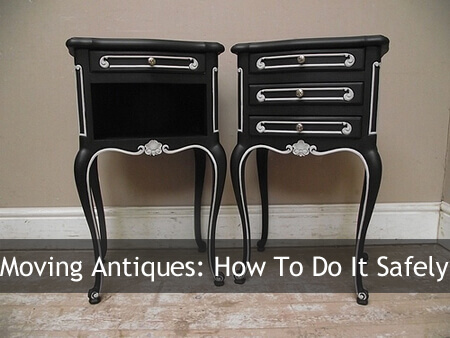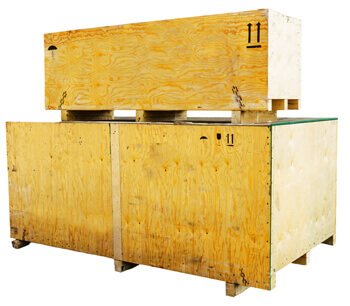 We all love our homes for the comfort and convenience it gives with every piece of furniture or home appliance but we certainly feel special affection for the beautiful antiques, collectibles and pieces of art among them. The desire to own the newest, most contemporary and shiny pieces of modern design and technology often gives way to a need to fill our homes with unique items that have a story to tell and add that special kind of nostalgic beauty. Most of them are valued not only for their price but for their sentimental value or the efforts spent chasing and finding certain desired item. When it comes to relocate with your antiques moving becomes slightly more difficult and challenging. The below tips underline the specifics in moving antique furniture, collectibles and art.
We all love our homes for the comfort and convenience it gives with every piece of furniture or home appliance but we certainly feel special affection for the beautiful antiques, collectibles and pieces of art among them. The desire to own the newest, most contemporary and shiny pieces of modern design and technology often gives way to a need to fill our homes with unique items that have a story to tell and add that special kind of nostalgic beauty. Most of them are valued not only for their price but for their sentimental value or the efforts spent chasing and finding certain desired item. When it comes to relocate with your antiques moving becomes slightly more difficult and challenging. The below tips underline the specifics in moving antique furniture, collectibles and art.
Packing
Providing the appropriate packing is the key point to ensure that your antiques or collectibles will move safely to your new location. All of them require specific packaging for different reasons:
- Some have unusual shape; others must be well protected from being scratched, chipped or smeared.
- Antiques that are fragile such as porcelains and crystals or gentle such as paintings should be packed and transported in wooden shipping crates filled with staffing material (poly chips or wrapped in bubble wrap).
- Standard or custom built shipping crates are strongly recommended for moving antique furniture – the items will be firmly fixed and well protected from impacts during transportation.
- Other packaging materials used for packing precious delicate items are double- and triple-walled cartons, stretch and cushioning wrap, fine tissue, kraft paper, moving blankets, etc.
- To ensure safe transport for the move you may also secure loose parts and doors/drawers, remove glass panels, mirrors or other removable parts and pack them individually using padding or stretch wrap.
- Use detailed labeling for each individually packed piece and for every box/crate so that you can put everything together more easily when relocation is competed.
Moving antiques must be done very carefully – you can pack your antiques all by yourself or leave this to the professional movers. If you prefer job done by moving experts, make sure to keep an eye on them in case they become negligent or do not put enough care simply because do not appraise the real value of your antiques.
Protect the value your antiques
Moving companies are liable for damage or loss of the items being transported and each customer can choose between two different levels of liability available. The Release Value is the Basic Limited Liability coverage, which is the second option if you waive the default Full Value Protection that you get automatically when signing the moving contract (Bill of Lading). Limited Liability valuation comes at no extra cost but as you can imagine it can hardly cover the real value of your regular items, counting for up to $0.60 per pound, not to mention the far more expensive antiques. A good idea is to have your valued items appraised by a qualified person. The best way to find an appraiser is through a recommendation by attorney, insurance agent or bank official. Getting Expert Valuation will allow you to receive a precise expert estimate about the real value of your antiques, collectibles and pieces of art and purchase a Full Value Protection for the move. This type of moving liability is an affordable option for peace of mind. In this case if some of the items get lost, damaged or destroyed during transportation or any other stage of the moving process it will be repaired, replaced or you will get cash settlement for the cost of the repair at the expense of the mover. If the moving company is not able to provide you a quote for full insurance coverage then it can direct you to a third party moving insurance company.
Find the right antiques mover
Finding a moving company capable of handling antiques is an overwhelming, but important task if you want to guarantee smoothest move for your antiques. The process itself involves filling out number of moving quotes, reading moving reviews on the Internet and making long calls with moving companies’ representatives – everything well explained here. Do not sign the cheapest offer but rather look for higher quality of service – trustworthy movers are more expensive but you’ll feel safe knowing that your favorite antiques are in the right hands. Once settled with a reliable mover you should invite its representative and point them out all antique furniture, collectibles and pieces of art among the belongings that are to be moved. Smaller collectibles like fine jewelry, small sculptures, coins, cash and document should go with you on the moving day. Put them in their original packaging or in sealable plastic bags and if necessary wrap them in soft tissue or padding and place them in carton boxes.
When moving is completed
First thing to do when your antiques finally arrive and are unloaded at your new home is to carefully check each item. If some of the items are missing, immediately notify your mover so that it can be located. If something appeared to be damaged make a note of it before signing the receipt and then try to resolve the issue with the mover in accordance with the terms in your insurance.
Moving antiques is always tricky – you do not want your prized possessions to be treated as any other object or, even worse, get damaged during the relocation. Following the above guide will help you avoid the pitfalls and achieve smooth and safe transition to their new home.


